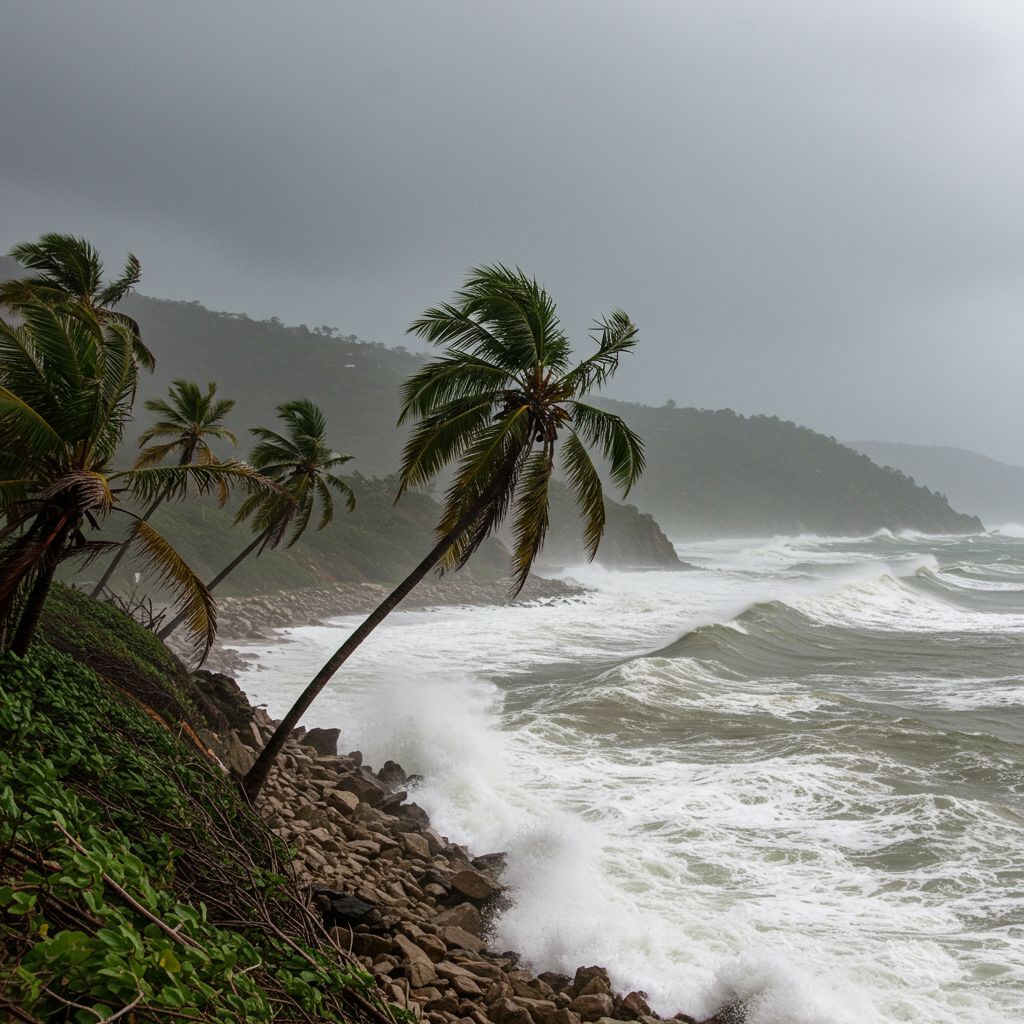Powerful Hurricane Erick Makes Landfall in Mexico
Hurricane Erick, the first major hurricane of the 2025 Eastern Pacific season, made landfall early Thursday morning on Mexico’s western coast. Striking as a powerful Category 3 storm, Erick brought with it destructive winds, torrential rainfall, and dangerous coastal flooding to the state of Oaxaca and surrounding areas.
The storm came ashore around 5:30 to 6 a.m. local time near the towns of Punta Maldonado and Santiago Pinotepa Nacional. At landfall, Erick packed sustained winds reported between 125 and 127 mph, with gusts reaching up to 155 mph. Just hours before reaching the coast, Erick had rapidly intensified overnight, briefly becoming an “extremely dangerous” Category 4 hurricane with peak winds near 140 mph, before weakening slightly just ahead of landfall. Erick is notably the first Pacific Category 3 hurricane on record to make landfall over Mexico in June.
Life-Threatening Hazards Threaten Coastal and Inland Regions
While wind speed is a key factor in a hurricane’s category, the most significant dangers from Erick stem from water. Forecasters warned of life-threatening flooding and mudslides due to intense rainfall, particularly in areas with steep terrain. Projections indicated 8 to 12 inches of rain could fall across Oaxaca and Guerrero, with isolated totals potentially reaching 16 inches. Additional heavy rain was expected in Chiapas, Michoacan, Colima, and Jalisco.
A dangerous, life-threatening storm surge was also anticipated near and to the west of the landfall location, leading to significant coastal flooding accompanied by large and destructive waves, some reportedly reaching heights up to 33 feet.
Early reports and social media images showed the storm’s immediate impact, including businesses damaged along the shoreline in San Agustinillo, flooded streets in tourist destinations like Huatulco, water entering a hospital, a river overflowing, multiple road landslides, stranded vehicles, and downed trees and poles across affected municipalities.
Storm Moves Inland, Weakening Rapidly
Following landfall, Hurricane Erick began moving inland over the mountainous terrain of southern Mexico. As expected, this interaction with land is causing the storm to weaken rapidly. By Thursday afternoon, Erick had been downgraded to a tropical storm, with forecasters anticipating it would continue to lose strength quickly and likely dissipate late Thursday night or early Friday morning. A tropical storm warning remained in effect for parts of the coast.
The impacted region includes areas still recovering from the catastrophic devastation caused by Hurricane Otis in October 2023. Otis, a Category 5 storm that underwent extreme rapid intensification, underscored the vulnerability of Mexico’s Pacific coast to powerful cyclones. The threats posed by Erick, especially water-related hazards, add another layer of concern for these communities.
Authorities urged residents in the path of the storm to remain vigilant and follow official guidance. Shelters were made available in at-risk areas, and evacuation efforts, including for tourists in beach destinations like Acapulco, were coordinated ahead of Erick’s arrival. Despite the significant damage reported, initial reports indicated no immediate deaths or injuries.
Erick’s arrival marks a significant event in what is forecast to be an active hurricane season in the Eastern Pacific, with predictions suggesting an above-average number of storms, including several major hurricanes. The focus now shifts to assessing the full extent of the damage and the crucial recovery efforts needed in the affected areas.




